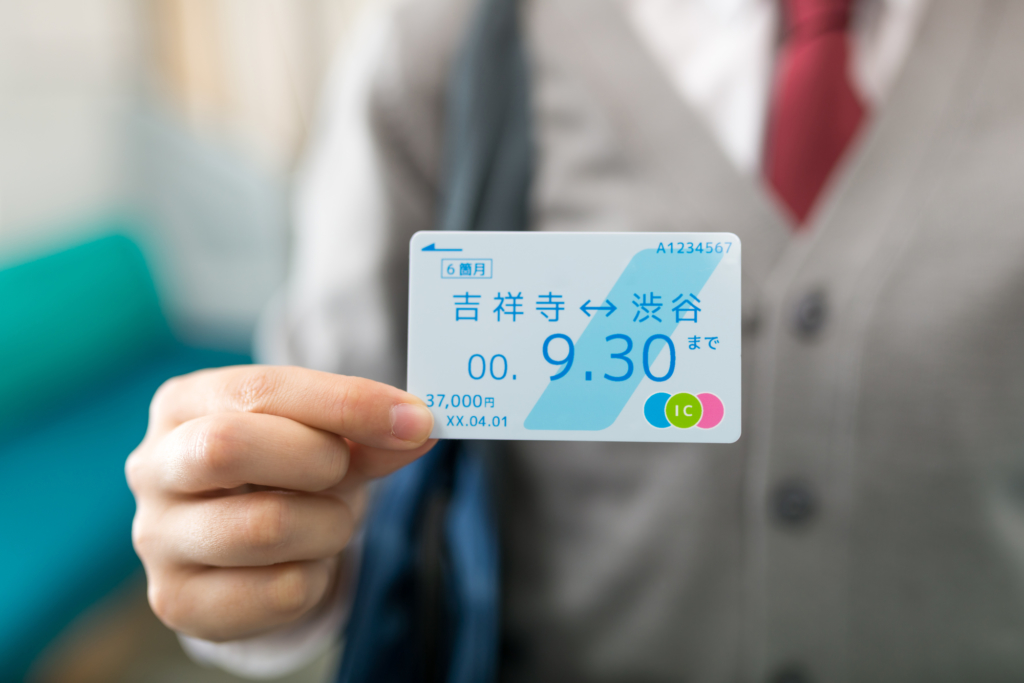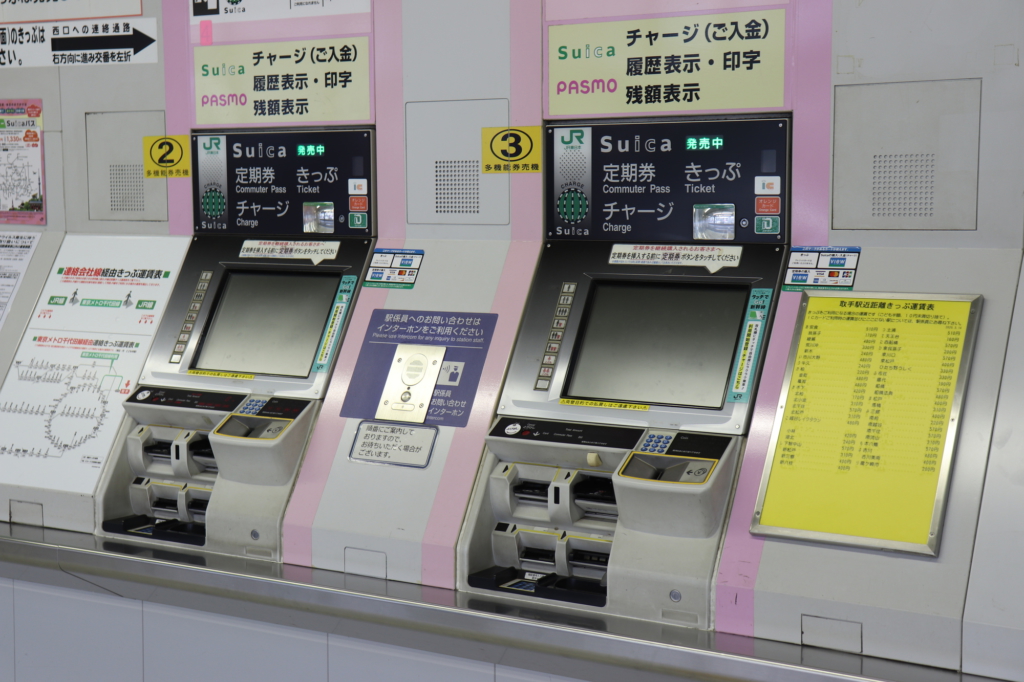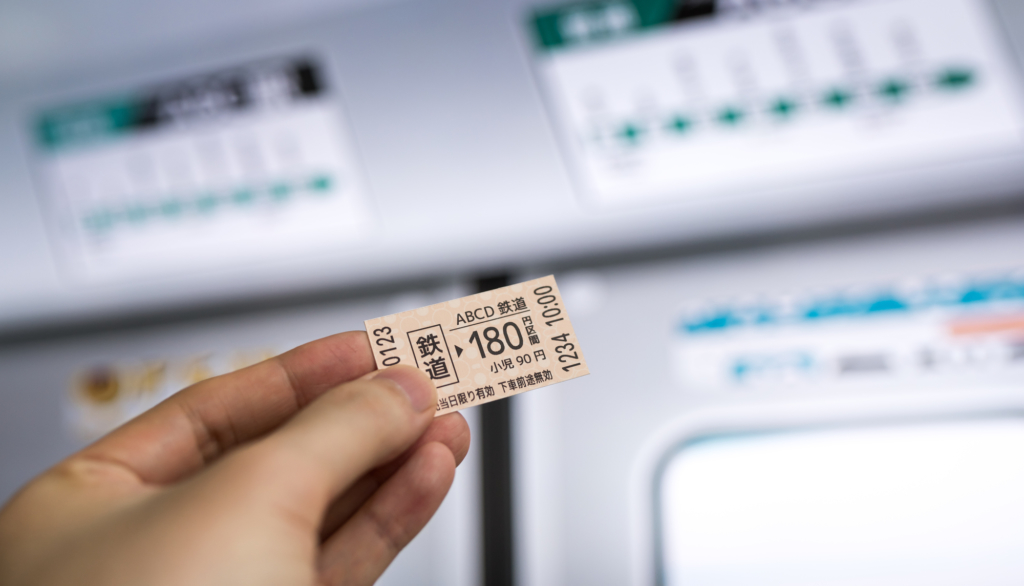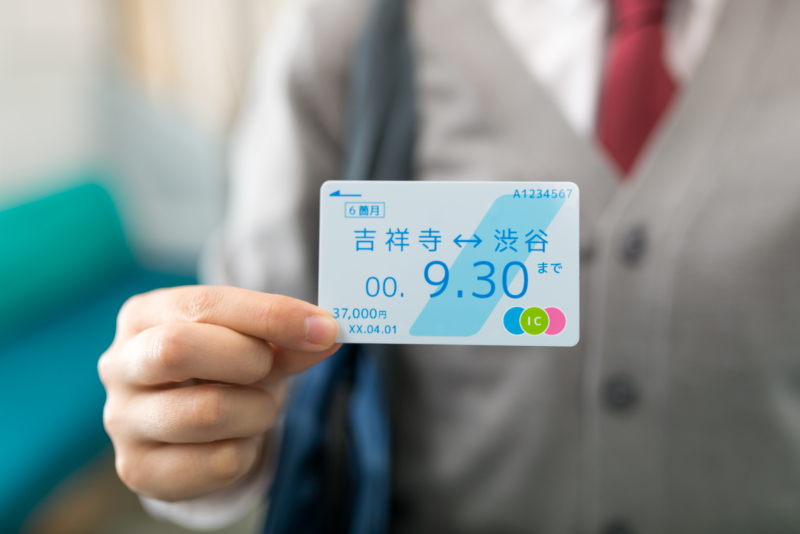What Types of Commuter Passes Are There?
A commuter pass for public transport allows you to travel back and forth on a particular route or section for a discounted price. Commuting to school or to work naturally involves traveling the same route every day over a long period of time, so many people in Japan opt to buy a pass between the nearest station to home and the nearest station to their school or workplace. There are the following two varieties of commuter passes.
Student Passes

Schoolchildren and students of all ages are eligible for student passes. You need to show your student ID when purchasing a student pass, so make sure to bring it along with you! Also, the route covered by the pass can only be between the nearest station to your home and the station designated by the school, only using the nearest or cheapest route between them.
Student IDs tend to be issued once you begin your studies, although some schools will do this beforehand. Contact your school for details on how they handle IDs.
Commuter Passes for Work

This type applies to anyone commuting to work. Unlike for student passes, no ID is necessary. Some companies will reimburse you for your commuting costs (either in full or up to a certain limit), so check with your company first to see if it offers any such support. While commuter passes offer discounts compared to regular tickets, the discounts are not as generous as those for student passes, so try to find a company willing to pay the entire cost where possible!
What are the Benefits of Purchasing a Commuter Pass?

- You can ride between any of the stations along the route cover by the pass as many times as you want.
- It’s a great discount compared to paying the fare separately for each ride.
- There are 1-month, 3-month, and 6-month passes, and the longer the pass, the larger the discount.
Where and How to Buy a Commuter Pass
Commuter passes can be bought at ticket counters in major stations or at commuter-pass vending machines. But be careful: railways only sell passes between stations that they operate. That is to say, if you commute only using JR trains, then you can only buy your pass at a JR-run station, and not Tokyo Metro or any other railway.
As for student passes, these can only be bought at ticket windows, because you need to present your student ID at the time of purchase. Ticket windows are often crowded, so get this purchase done with plenty of time to spare. Passes (student and commuter) can be purchased up to 14 days before the start of its validity period.
For some people, their commute involves lines run by multiple railway companies. Thankfully, it’s possible for a single commuter pass to encompass up to 3 different railway companies.
Following is a walk-through of the process of purchasing a commuter pass at a ticket window.
Purchasing at a Ticket Window

(1) Fill out the Commuter Pass Application Form: Head to the ticket office, pick up a Commuter Pass Application Form (定期乗車券購入申込書), and fill out the necessary spaces right there, at the desk provided. You’ll need to write your name, the date you’d like the pass to become valid, and the address of your office/school, which you should make sure to look up beforehand.
(2) Bring it to the window: Once you’re done with the form, bring it to the ticket window. If you’re looking to buy a school pass, this is where you’ll be asked for your student ID. The staff member will look through your application, and if there’s nothing that needs to be fixed, your pass will be issued on the spot. The pass will usually come loaded on an IC card, and issuing a new IC card requires a deposit of 500 yen. If you already have an IC card, on the other hand, the pass can be loaded directly onto it. Each railroad company has its own list of acceptable IC cards, so make sure to ask if the one you have works for this purpose.
* You can find these ticket offices at major stations. Opt for a major station on the exact line that you plan on using.
Purchasing a Commuter Pass at a Ticket Machine

(1) Head to a ticket machine, and make sure you pick the right type of machine! There are machines that exclusively sell tickets, others where you can charge your IC card, and still others that handle commuter passes. Look for the word 定期券 atop the machine (in white letters on the black background of the two machines in the photo above).
(2) Select 新規購入 (Buy New).
(3) Select 通勤定期券 (Commuter Pass for Work).
(4) Select the duration (1 month, 3 months, or 6 months) and start date.
(5) Select your origin station, destination station, and the route you want to take.
(6) Select either Suica定期券 (loading your pass onto a Suica IC card) or 磁気定期券 (physical ticket with magnetic back).
* If you already have a Suica card, select お手持ちのSuicaを利用する (I want to use my own Suica card).
* If you opt to get a new Suica card, there will be a 500 yen deposit.
(7) If you chose to load your pass onto a Suica card, you will be asked whether you want to also charge the card (i.e. for individual rides). Pick チャージしない if you don’t.
(8) Pay by cash or credit card.
(9) Wait for your new pass to be printed and ejected from the machine!
*This specific set of instructions is specific to the JR railway, but instructions for other companies are roughly similar.
Can I Get a Refund for My Pass?

You can only get refunds for passes that are more than a month away from expiring. The amount you get back is equivalent to the amount you paid, minus the monthly pass fee for each month you used it (rounded upward), minus a 220 yen processing fee. If you’re looking for a refund on a 1-month pass, you can only get it within the first 7 days since the start date, and the refund amount is the amount you paid, minus the cost of a round trip for each day since the start date, minus the 220 yen processing fee.
You can only get refunds at a ticket window (for the appropriate railway company). Here, an official proof of ID (such as a passport, student ID, or residence card) will sometimes be required, so bring one along just in case.
Only Riding a Few Times Per Week? Opt For Coupon Tickets!

“Coupon tickets” allow you to purchase 11 train tickets (for the same origin/destination combo) for the price of 10. These can be purchased at ticket machines within stations. They are valid within 3 months of purchase. If you’re heading to your workplace or campus two or three times a week, then it might not be worth it to get a commuter pass. In general, if you’re commuting 21 days or less in a given month, the coupon tickets present a better deal, although the number is different for JR commuters, as JR’s commuter passes offer a larger discount than others. Before purchasing either, run the numbers for yourself to see if a commuting pass really does offer a discount in your case, and if not, go for coupon tickets instead.
Save Money While Riding the Trains
And that’s all you need to know about commuting passes. You’ll be riding public transit on a daily basis while living in Japan, be it for school or for work. This article will help you out when you decide to buy a new pass or you have questions about your pass that you’d like answered!
If you want to give feedback on any of our articles, you have an idea that you’d really like to see come to life, or you just have a question on Japan, hit us up on our Facebook!
The information in this article is accurate at the time of publication.

